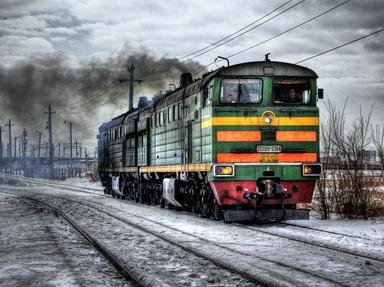Quiz Answer Key and Fun Facts
1. The Indian-Pacific carries passengers between what two Australian cities?
2. The Indian-Pacific completed its first journey in 1970. Why was it not possible for a single train to cross the country before that?
3. While the transcontinental trip on the Indian-Pacific has taken slightly different times over the years, which of these is the closest to the time you can expect to spend on your journey?
4. Your trip on the Indian-Pacific will take you through three states. Which of these will you NOT be visiting?
5. The first part of the trip (traveling westwards) usually uses the Western and Broken Hill lines, and makes several stops to pick up passengers. At which of these stops could you debark and see the observatory that played an important communications role in the 1969 moon landing?
6. After departing from the east coast around 3:00pm, you probably had a good sleep overnight before arriving in the early morning at the first stop which offers a long break for excursions. Which of these might you choose to visit on your excursion in Broken Hill?
7. When it opened in 1970, the Indian-Pacific did not visit Adelaide - passengers had to change trains at Port Pirie if they wanted to get there. In 1986 the loop south to Adelaide became part of the regular route. This allowed passengers to transfer to join which other iconic Australian railway at the start of its journey?
8. As you ride on the Indian-Pacific, you will travel along the longest straight stretch of railroad track in the world while you cross which region?
9. Which of these stops made by the Indian-Pacific is virtually a ghost town, with a handful of residents and a store that only opens when the train is in town?
10. One of the last stops made by the Indian-Pacific is at the Western Australian town of Kalgoorlie. What was the main reason for the establishment of Kalgoorlie in 1893?
Source: Author
looney_tunes
This quiz was reviewed by FunTrivia editor
stedman before going online.
Any errors found in FunTrivia content are routinely corrected through our feedback system.
